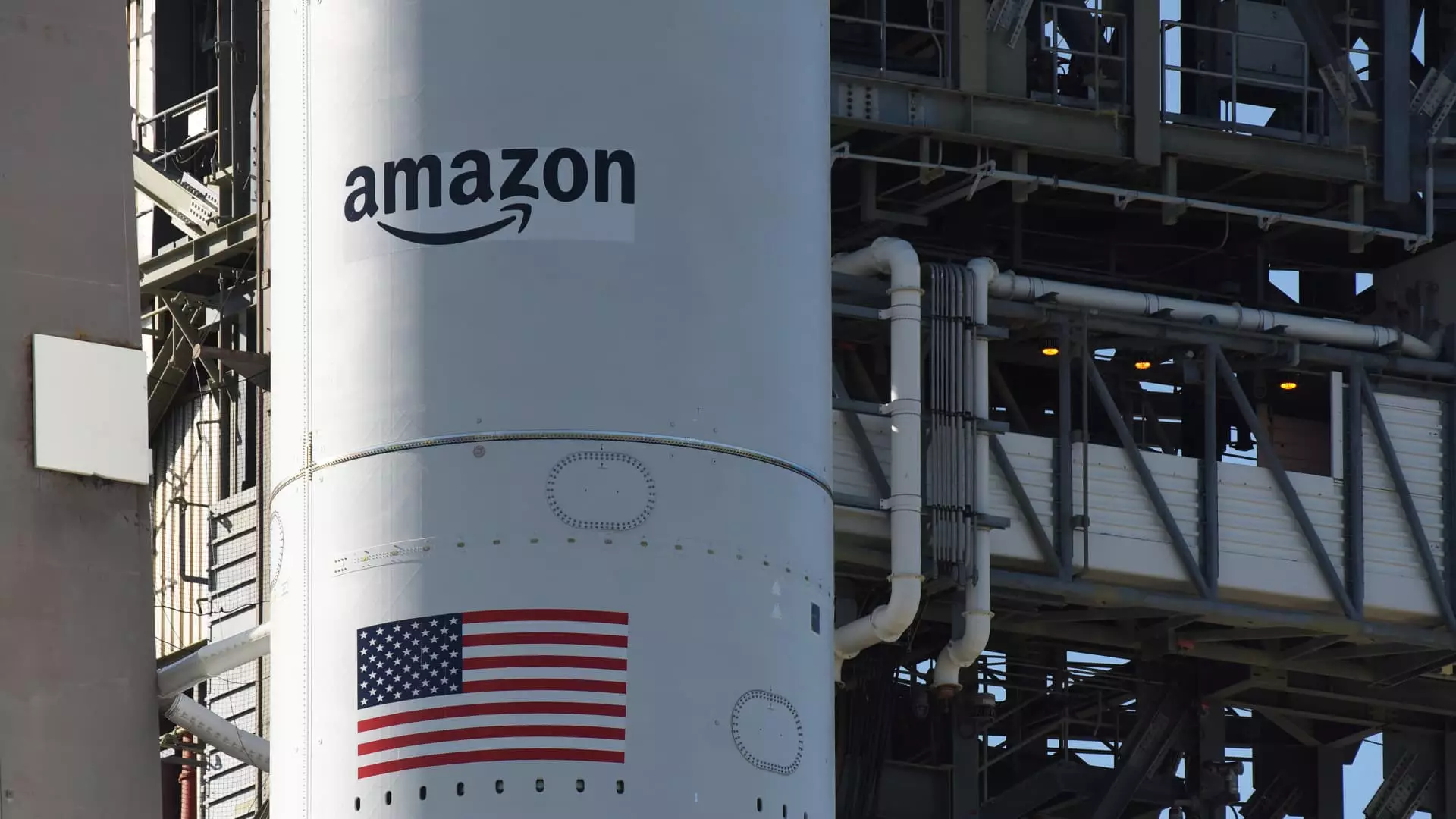In a world where technological advancements are often met with high anticipation, Amazon’s Kuiper satellite launch has encountered a significant setback. Set to elevate 27 of its internet satellites into low Earth orbit from Cape Canaveral, Florida, the mission was abruptly canceled due to unfavorable weather conditions. The United Launch Alliance (ULA) cited “stubborn cumulus clouds” and heavy winds as critical factors for the postponement, revealing the delicate balance of nature and technology. Such weather-related interruptions remind us that even the most ambitious projects are subject to forces beyond human control, emphasizing the inherent unpredictabilities in space exploration.
Competing with Giants
Amazon is undertaking a formidable challenge in the arena of satellite internet service. With its direct competitor, SpaceX, having already established a formidable presence with thousands of satellites in orbit through its Starlink service, Amazon’s race to deliver high-speed, low-latency connectivity is not just a corporate ambition but a contest of technological prowess and market strategy. The stakes are high as both companies aim to connect global users—ranging from individuals in remote locations to expansive corporations and governmental bodies—with reliable internet access. The potential impact on communication, education, and commerce makes this competition all the more vital for the future landscape of digital connectivity.
The Pressure is On
Amazon’s ambitions for the Kuiper project are underscored by an urgent deadline issued by the Federal Communications Commission (FCC). By July 2026, the company must have a significant portion of its satellite constellation operational—specifically 1,618 satellites. Such a looming deadline adds pressure not only to achieve technical excellence but also to foster rapid scalability and operational efficiency. The promise of commercial services later this year adds an additional layer of scrutiny; it is a race against time but also against the establishment that SpaceX has solidified. As they prepare for future missions, Amazon is not just racing to launch satellites but also to secure a vital share of the burgeoning satellite internet market.
Aiming for the Stars
Despite the recent delays, Amazon’s forward momentum continues, as the company ramps up production and prepares for subsequent launches. The launch protocol, which relies on ULA’s Atlas V rockets, is a logistical feat that integrates numerous moving parts. This includes not only the satellites but also the technology that facilitates their operations—from ground control to user terminals. The company’s comprehensive plans hint at a robust strategy, suggesting that with urgency and innovation, Amazon is poised to redefine internet connectivity.
This interruption may be a setback for the short term, but it serves as a reminder of the complexities involved in space missions. It fuels interest in how technological evolution can transcend earthly limitations, ultimately aiming for a future where seamless connectivity can be a reality for millions. The ambition to leverage satellite technology is not merely about competition; it reflects a larger narrative of human endeavor to connect, communicate, and innovate on a cosmic scale, paving the way for a digitally interconnected world.

